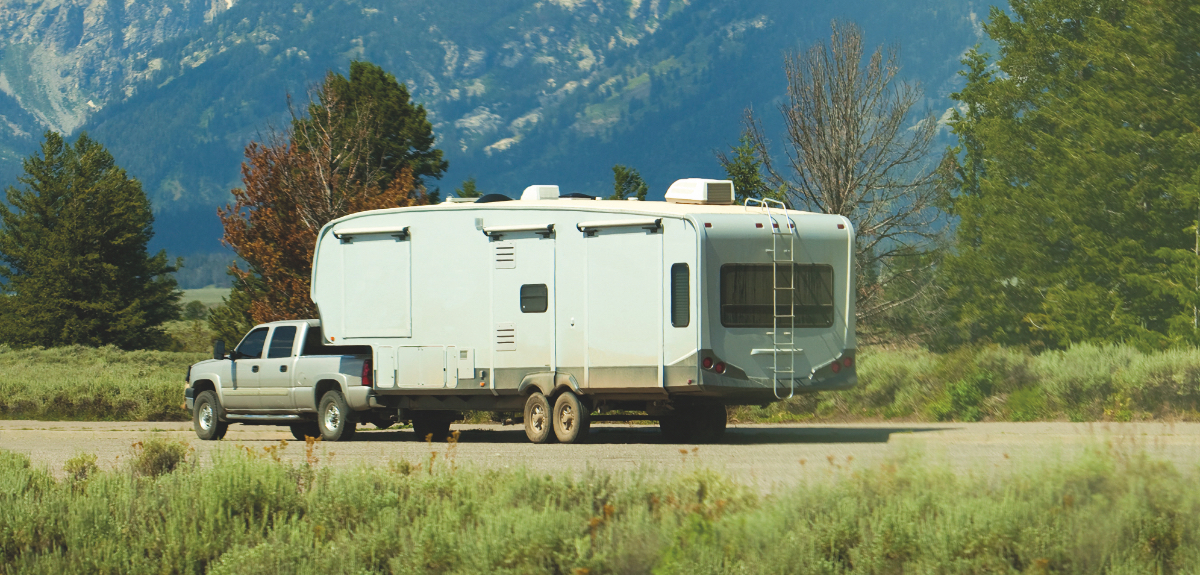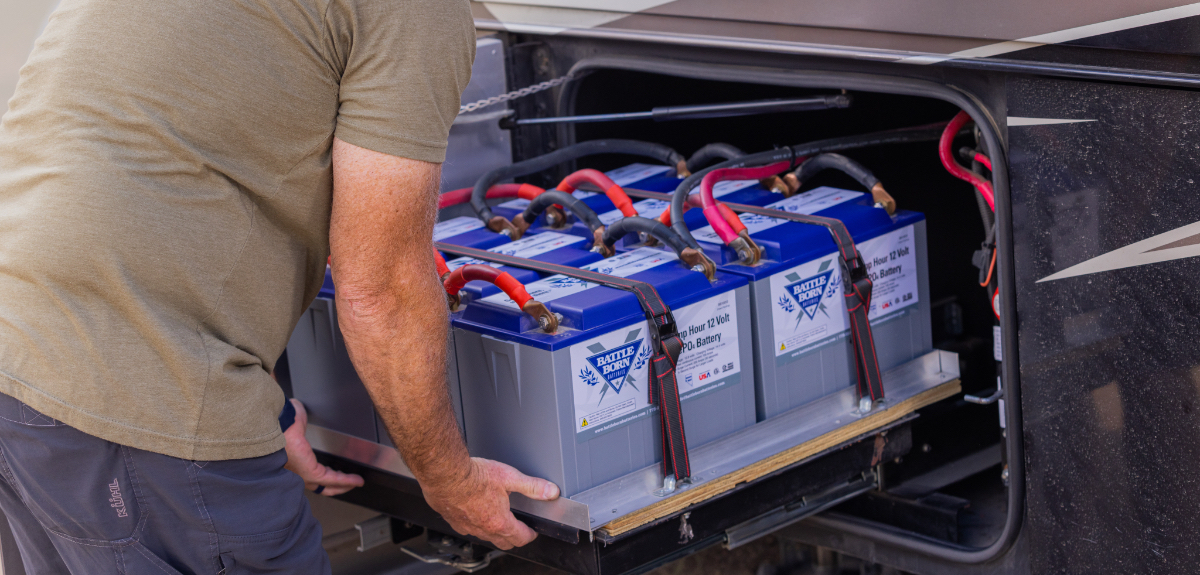A Tale of Two RV Toilets
Comparing two of the most popular types of RV toilets and which to use when nature calls.
Image Caption:
I’ll admit it. Having our own toilet was one of the main reasons my wife and I got into RVing. We’re cyclists and the thought of being able to skip the port-a-john lines at events to enjoy our private RV toilet oasis was too good to pass up. A decade later, we still don’t miss the port-a-johns.
But as important as the toilet was when we bought our first RV, we really didn’t know that much about RV toilets at the time. We also didn’t know that there were entirely different kinds of toilets used in RVs. We just got what our rig came with and we’re happy with it.
In the years since, we’ve learned about—and used—two different types of RV toilets: traditional RV toilets with black tanks, and cassette toilets. They both perform the same basic function, but they do it in very different ways. If you’re new to RVing, the following comparison might help you decide which toilet system is best for you. And if you’re an experienced RVer, you might enjoy this glimpse into how the other half lives or, rather, goes.
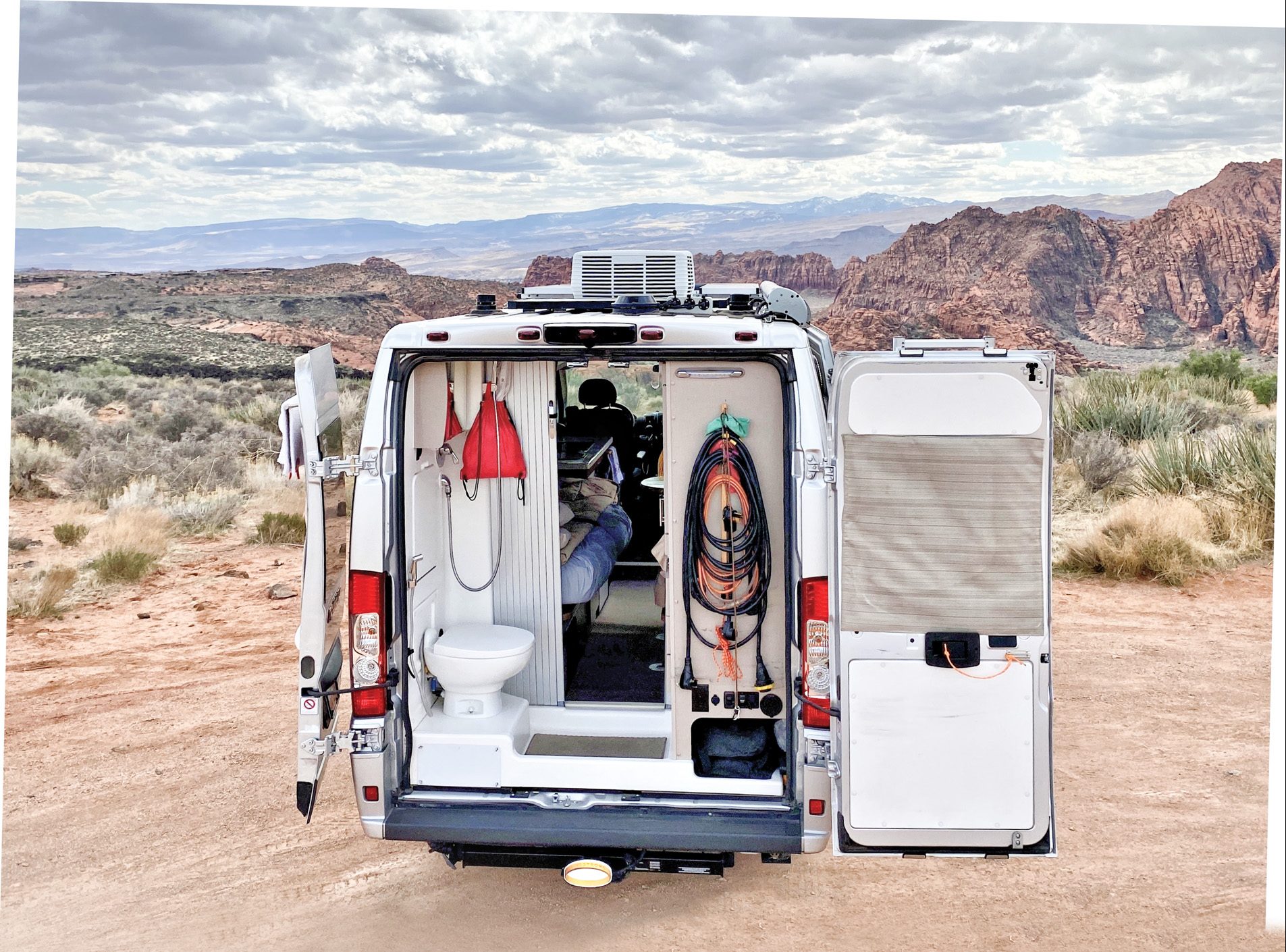
The wet bath (with traditional RV toilet) in the Adinaro’s camper van (image courtesy of James Adinaro).
Traditional RV Toilets
A traditional RV toilet is by far the most common RV toilet type in North America, and it’s the most like the home toilets you’re already acquainted with. They look reasonably familiar, minus the tank on the back. Water flow for this type of toilet is typically handled with a foot pedal. You depress the pedal halfway to fill the bowl with water for use, and all the way down to flush.
From an end-user perspective, there’s little training required to use them, so the traditional RV toilet gets points for having a very short learning curve. That makes them great for first-timers.
However, once you flush the toilet, the similarities to residential toilets end. In a home, once you flush the toilet you never think about that waste again. But in an RV, toilet waste goes into your rig’s black tank. That black tank will eventually fill up, and you’ll have to deal with it. Keeping tabs on the level is easy, as there’s typically a monitor panel of some kind inside the RV to check it.
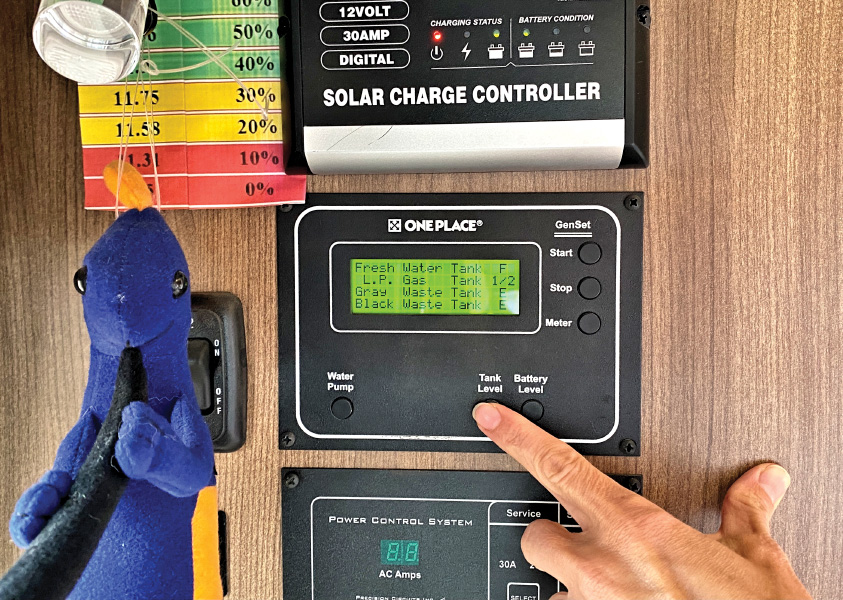
it’s a good idea to keep tabs on your black water tank monitor to know when it needs emptied (image from James Adinaro).
You’ll want to become familiar with black tank additives. There are many types and brands, but they all aim to do two things: 1) keep unpleasant odors in check; and 2) break down any solids in the tank to ease emptying.
As for emptying, black tanks need to be emptied at RV dump stations. Dump stations aren’t hard to find, but you’ll need to drive (or tow) your RV to them. When you’re there, you’ll use special dump hoses and fittings to drain your RV’s black tank into a land-based sewage system. If everything is working right the whole process is relatively quick, clean, and trouble-free.
But problems can and do occur, and you need to be ready to deal with them. First off, *everything* doesn’t always drain out of the black tank as you’d hope, so you’ll need to learn how to rinse out your black tank from time to time. Clogs and leaky valves also happen and aren’t particularly fun to deal with when they do.
Another common problem has to do with the tank level monitors giving inaccurate readings. This is more common with monitors that use “probe” style contacts, as debris in the black tank can foul the sensors, especially after being used awhile. It’s less common with sonar-based tank sensors, which are mounted outside the tank and cannot become fouled.
Traditional RV toilets and the black-water holding tank also need a moderate amount of water to work properly. You can trace most black tank issues to not using enough water when dumping the tank. If you’re at a campground with unlimited water, this is not a big deal. But if you’re boondocking and trying to conserve your freshwater supply, flushing it into your black tank doesn’t feel like the best use of that resource.
The other thing to remember about water is that it can freeze. With a traditional RV toilet, the flush water supply line can freeze, and the wastewater in your black tank can freeze, too, along with the dump-valve mechanism. (This actually happened to us!) The potential to freeze makes these kinds of toilets, in RVs not fully set up for cold weather use, less than ideal for winter RVing.
Cassette Toilets
On a scale from most home-like to least, the cassette toilet would land somewhere in the middle. In some respects, they’re a lot like traditional RV toilets, but in other ways, they’re closer to a port-a-potty.
Cassette toilets aren’t yet common in North American RVs, though you can find them in some smaller motorhomes, camping vans, truck campers, and overlander vehicles. But in Europe, almost every rig uses cassette toilets. We got well acquainted with our rig’s cassette toilet during our European RV vacation.
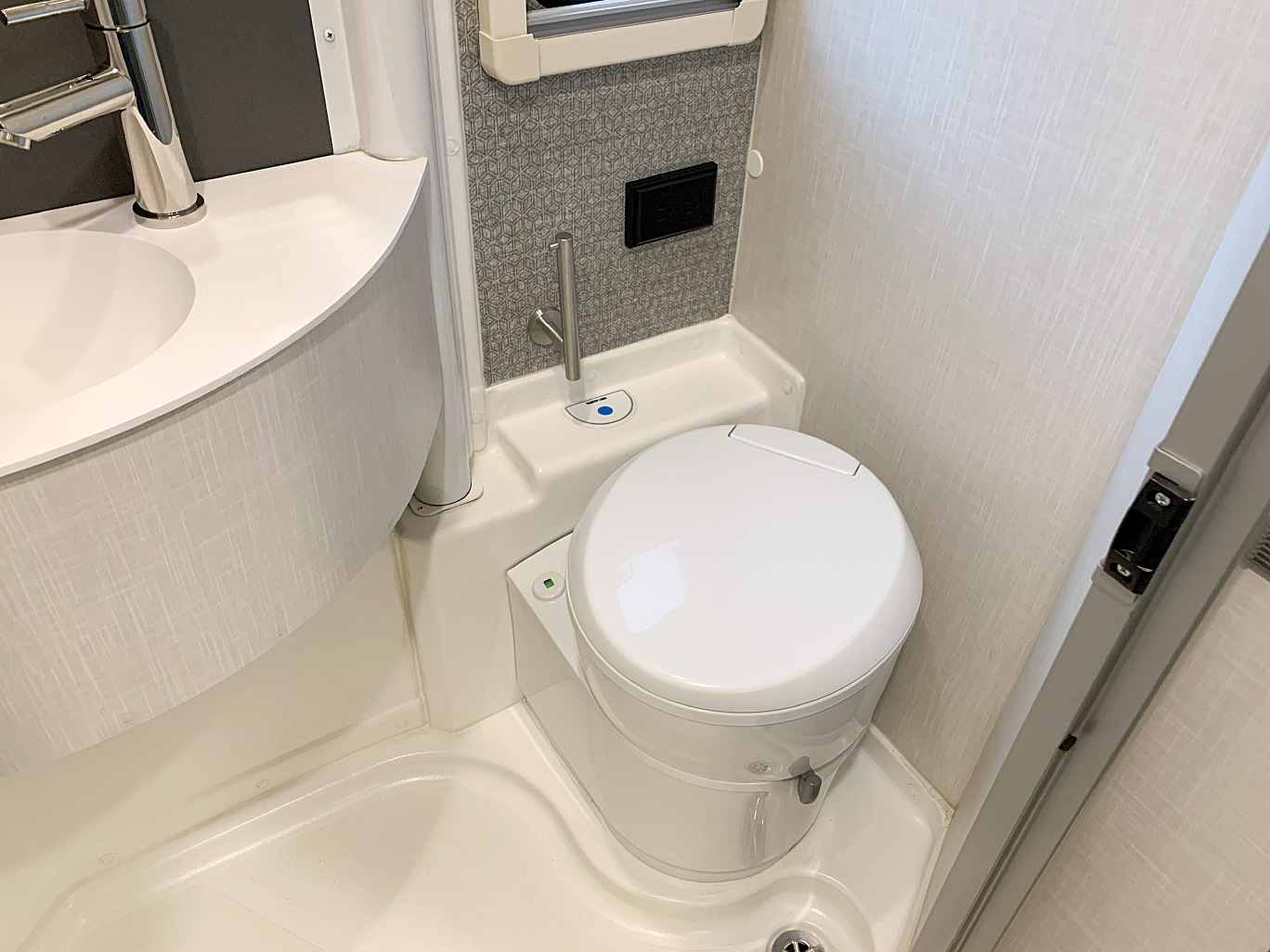
A cassette toilet set up in an RV (image from James Adinaro).
On the inside, the “user interface” is like a traditional RV toilet, but instead of a foot pedal to flush, there’s usually a lever that operates a trap door. Unlike the traditional RV toilet, there are separate controls for opening the trap door and adding water. And while you can find traditional RV toilets made from porcelain like a home toilet, every cassette toilet I’ve come across has been plastic, not that a plastic toilet makes much difference to the overall “going” experience.
Similarities to the traditional RV toilet end at that trap door. Once you flush a cassette toilet, the waste falls into the cassette, which is like a self-contained, miniature black tank. When it’s time to dump, you remove the entire cassette from your rig, and take just the cassette to where you’ll dump it.
Cassettes come in various capacities, but most of them are about five gallons. The portable cassette opens some interesting possibilities for where you can dump (where permitted). It’s possible, for example, to take the cassette into a restroom and dump it directly into a toilet. You can also dump the contents into vault toilets, pit toilets, and even some RV dump stations. So, the cassette toilet gives you more options for dump locations. But the small tank means you’ll be emptying it quite a bit more often—the two of us can use a cassette toilet for two days before we need to dump it.
Checking the tank level on cassette toilets is pretty easy. There’s typically an indicator that changes from green to red as the cassette fills. These indicators are usually based on a float, so if gravity and density are still working, inaccurate readings should be rare.
Since the cassettes are small, they are usually located above the RV’s floor. This means they should be fine to go winter camping without freezing. There is still the flush water supply to think about, but at least your black tank won’t freeze.
Cassette toilets do have their challenges though. Waste breaks down differently in a small, anaerobic environment than it does in the relatively breezy spaces of a black tank. So, your choice of tank additives is much more critical. We learned this one the hard way!
Since you typically dump the cassette without a hose, you’ll also be getting considerably closer to the effluent than you would with a traditional RV black tank. Now you know why I said the toilet chemicals were important. This is the main issue people have with cassette toilets.
Make no mistake about it, having your own private toilet facilities everywhere you travel is one of the great benefits of RVing. And while it’s about 90 percent likely your RV has a traditional toilet with a black tank, it’s good to know there are other options available. Like most things in RVing, there are trade-offs with any option, and choosing what works best for you should reflect your own personal RVing priorities and style.


